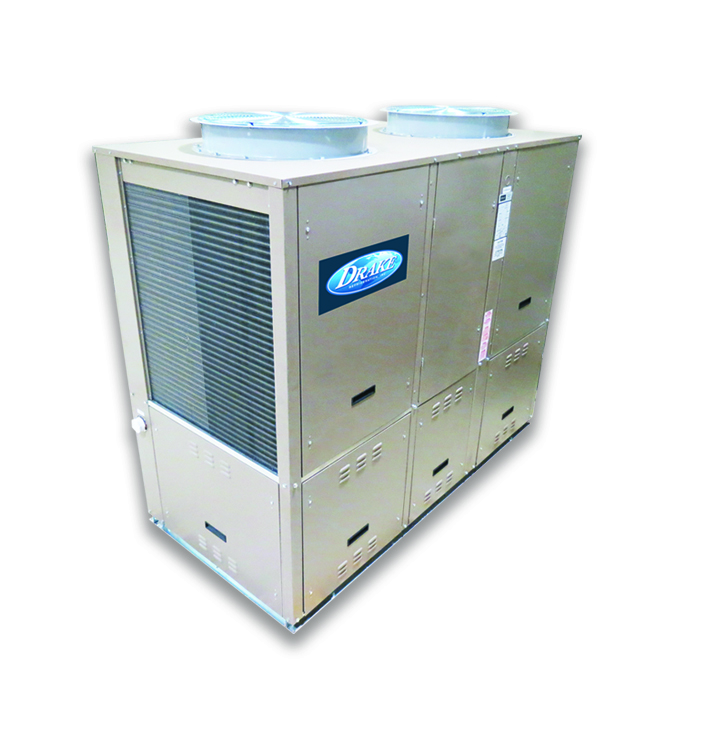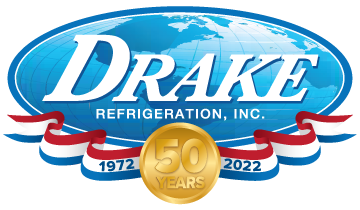
The best food processing chiller is different for every facility – there’s no universal solution. So, which system is best for you? Generally, the answer depends on several factors, such as your application and preferences. However, there are several other considerations that we’ll walk you through in this post.
To make your decision process smooth, we’ve profiled the following three food processing chillers, highlighting the type of coolant, key features, benefits, and the best applications for each one.
- 42˚F+ Potable Water Chiller
- 35-41˚F Ingredient Water Glycol Chillers
- Glycol Chillers
Let’s explore these options further to help determine which food processing chiller might be the best solution for you.

42°F+ Potable Water Food Processing Chillers
Type of coolant: Water
Key features and benefits:
- Economical solution for budget-conscious applications
- Double-walled heat exchangers prevent contamination
- Provides excellent cooling efficiency
Best applications: Potable water food processing chillers are suited formedium-temperature food processes, such as the production of:
- Cheese
- Meat
- Sauce
35-41°F Ingredient Water-Glycol Food Processing Chillers
Type of coolant: Water-glycol mix
Key features and benefits:
- Uses non-toxic propylene glycol instead of ethylene to ensure food safety
- Coolant’s antifreeze properties allow a lower freezing point than water
- Customizable low-temp water and design options
Best applications: The near-freezing water can be used for:
- Washing produce
- Making cheese
- Cooling meat products
- As an ingredient in dough or other food products
Glycol Food Processing Chillers
Type of coolant: Glycol
Key features and benefits:
- Uses non-toxic propylene glycol instead of ethylene to ensure food safety
- Zero product spoilage and improved food quality
- Customizable low-temp water and design options
Best applications: Glycol-only food processing chillers are most often used in low-temperature storage applications for food products, such as:
- Yogurt
- Ice cream
- Chocolate
- Cold tables
However, these high-performance units are also suitable for above-freezing applications, making them versatile solutions for many food processing applications.
Learn more about food safety considerations of water-glycol and glycol-only food processing chillers on our blog.

Customization is the icing on the cake
When choosing the best food processing chiller for your needs, begin by narrowing in on one of the options above. Then, consider adding customizations to ensure it is uniquely engineered for your operation.
Below, we’ve outlined a few of the many custom options to consider:
- Redundancy – Choose full capacity, full electrical isolation, dual vs. multi-circuit, or auto-changeover redundant pumps
- Efficiency – Choose EC condenser fans, floating head pressure, heat reclaim options, or variable frequency drive (VFD) pump
- Controls – Choose custom programming, MCS microcontroller upgrades, central login for multiple units, onboard vs. remote touchscreen controls, or email and text alarm alerts
There are many other ways to customize the best food processing chiller to ensure it meets your application requirements and preferences. You may also consider adding digital flowmeters, circuit breakers, low-ambient protection, phase monitor, fused disconnect, and corrosion-resistant materials.
Getting started
Ultimately, choosing the best food processing chiller is most effective with personalized help from a knowledgeable team. Our sales team and engineering team are excellent resources during the initial discussion phase and beyond. They’ll help steer you in the right direction, taking care to design the ideal food processing chiller for your application and requirements. After the equipment start-up phase, our service team is here for you, providing over-the-phone technical support with remote login capabilities throughout the lifecycle of a Drake chiller system.
Trust our 50 years of experience delivering economical and high-performance engineered solutions with a proven 99.4% uptime rate. Contact us to start choosing the best food processing chiller for you.

